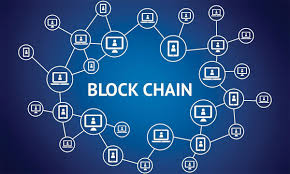What is Blockchain?
 Gift Ayodele
Gift Ayodele
Blockchain is a revolutionary technology that’s changing how we think about transactions, security, and trust. It’s the backbone behind cryptocurrencies like Bitcoin and Ethereum, but it’s much more than just about digital money. To put it simply, blockchain is a decentralized, distributed ledger that records transactions across many computers in a way that ensures data security and transparency.
Imagine a book of records 📚 that is duplicated across multiple locations. Each time a transaction happens, it’s recorded in this book, and everyone with a copy of the book gets updated at the same time. This ensures that everyone has the same information, making it nearly impossible to alter or tamper with the records.
How Blockchain Works
Blockchain technology works by chaining together blocks of data. Each block contains three key components:
Data: This can be information about a transaction, such as the amount transferred and the sender and receiver’s details.
Hash: A unique code that identifies each block. It’s like a fingerprint that ensures the block’s information hasn’t been changed.
Previous Block’s Hash: This links the block to the one before it, creating a chain. If someone tries to tamper with one block, the entire chain breaks, making the system highly secure.
Every participant in the blockchain (referred to as a "node") has a copy of the entire blockchain. When a new transaction occurs, the network of nodes validates it through a consensus mechanism, such as Proof of Work or Proof of Stake. Once verified, the new block is added to the blockchain, and all copies of the blockchain are updated.
Decentralization
One of the key characteristics of blockchain is decentralization. Unlike traditional systems where one central authority (like a bank) keeps track of transactions, blockchain spreads this responsibility across a network of computers. This eliminates the need for a middleman and makes the system more transparent and less vulnerable to fraud.
Key Features of Blockchain
Immutability: Once a block is added to the blockchain, it cannot be altered. This ensures the integrity of the data.
Transparency: Since every participant has a copy of the blockchain, it’s easy to verify transactions.
Security: Blockchain uses advanced cryptography to secure data, making it highly resistant to hacking.
Decentralized: No single entity controls the blockchain, which reduces the risk of corruption or fraud.
Uses of Blockchain Beyond Cryptocurrencies
While blockchain is widely known for its role in cryptocurrencies, its potential extends far beyond digital money:
Supply Chain Management: Blockchain can track products as they move through a supply chain, providing real-time information about where the product came from and its journey to the customer. This improves transparency and reduces fraud.
Smart Contracts: These are self-executing contracts with the terms directly written into code. Smart contracts automatically execute actions (like payments) when certain conditions are met, removing the need for intermediaries.
Voting Systems: Blockchain technology can be used to create secure and transparent voting systems where votes are recorded in a tamper-proof ledger, ensuring fair elections.
Healthcare: Blockchain can securely store patient records, ensuring they are only accessed by authorized personnel and maintaining privacy.
The Future of Blockchain
Blockchain technology is still in its early stages, but its potential is vast. As industries continue to adopt blockchain, we may see a future where trust, security, and transparency are embedded in our digital lives.
For a detailed, technical dive into how blockchain works, check out
Subscribe to my newsletter
Read articles from Gift Ayodele directly inside your inbox. Subscribe to the newsletter, and don't miss out.
Written by
